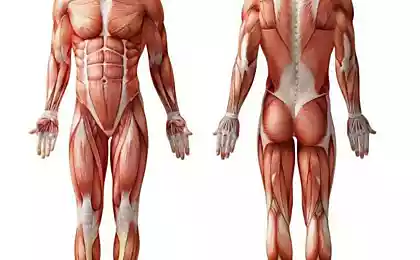158
Using a tablet is harmful to the back
Typing text on a tablet touch screen can cause problems with the muscles in the upper body.

New findings from researchers at Northern Illinois University show that users of mobile computers with touch screens are more prone to back problems than people using conventional PCs or laptops. According to experts, the fingers and hands of a person, when typing on the touch screen, “hang” in the air. This static load leads to prolonged tension of the muscles of the neck and shoulders.
Study author Jeong Ho Kim said: Prolonged static exercise is a risk factor for musculoskeletal diseases. Thus, a virtual keyboard for a long period of time can increase the risk of musculoskeletal discomfort and shoulder girdle disorder.” In the test trials, scientists observed a group of 19 experienced sensory typists without problems with the musculoskeletal system of the upper body. Each participant was asked to type an excerpt from the Grimm brothers' tales for five minutes on a touch screen, and using desktop and portable keyboards.
At the same time, the researchers used electrodes to record muscle activity in the forearms and shoulders of the participants. The researchers found that while muscle activity in the forearms was lowest when participants typed on a virtual keyboard, it was higher in the trapezoidal muscle between the neck and shoulder.
Kim explains, Floating arms and forearms, while typing on a virtual keyboard, can increase the static load in the trapezoidal muscle and therefore this leads to higher muscle activity. Although the differences were relatively small, they may be important over time.”
Physiotherapist Tim Allardyce says tension in the upper trapezoidal muscle for days or months leads to fatigue and neck pain. Problems with the trapezoidal muscle in the upper neck are becoming more common for regular iPad users. The new data is especially important given that tablets and phones have overtaken TV in popularity.

New findings from researchers at Northern Illinois University show that users of mobile computers with touch screens are more prone to back problems than people using conventional PCs or laptops. According to experts, the fingers and hands of a person, when typing on the touch screen, “hang” in the air. This static load leads to prolonged tension of the muscles of the neck and shoulders.
Study author Jeong Ho Kim said: Prolonged static exercise is a risk factor for musculoskeletal diseases. Thus, a virtual keyboard for a long period of time can increase the risk of musculoskeletal discomfort and shoulder girdle disorder.” In the test trials, scientists observed a group of 19 experienced sensory typists without problems with the musculoskeletal system of the upper body. Each participant was asked to type an excerpt from the Grimm brothers' tales for five minutes on a touch screen, and using desktop and portable keyboards.
At the same time, the researchers used electrodes to record muscle activity in the forearms and shoulders of the participants. The researchers found that while muscle activity in the forearms was lowest when participants typed on a virtual keyboard, it was higher in the trapezoidal muscle between the neck and shoulder.
Kim explains, Floating arms and forearms, while typing on a virtual keyboard, can increase the static load in the trapezoidal muscle and therefore this leads to higher muscle activity. Although the differences were relatively small, they may be important over time.”
Physiotherapist Tim Allardyce says tension in the upper trapezoidal muscle for days or months leads to fatigue and neck pain. Problems with the trapezoidal muscle in the upper neck are becoming more common for regular iPad users. The new data is especially important given that tablets and phones have overtaken TV in popularity.























